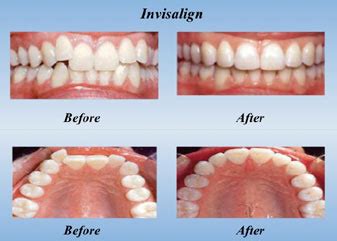How Long Does It Take For Teeth To Shift Back
Ronan Farrow
Apr 05, 2025 · 3 min read

Table of Contents
How Long Does it Take for Teeth to Shift Back After Orthodontic Treatment?
It's a common question among those who've completed orthodontic treatment: how long does it take for teeth to shift back? The answer, unfortunately, isn't a simple number of days or weeks. The timeframe varies greatly depending on several individual factors. Let's delve into the details.
Factors Affecting Teeth Shifting After Orthodontics
Several factors influence how quickly and to what extent your teeth might shift back after braces or Invisalign:
1. The Severity of the Initial Misalignment:
More severely misaligned teeth are more likely to shift back than those with minor corrections. The greater the initial adjustment, the longer it takes for the supporting tissues to stabilize.
2. The Type of Orthodontic Treatment:
Different treatments have varying degrees of success in long-term tooth stability. While both braces and Invisalign are effective, the techniques used and the duration of treatment can affect the outcome.
3. Patient Compliance with Retention Instructions:
This is arguably the most crucial factor. Orthodontists provide retainers – removable or fixed – specifically designed to maintain the achieved alignment. Consistent and diligent use of retainers is paramount to prevent relapse. Failure to wear retainers as prescribed is the leading cause of teeth shifting back.
4. Age:
Younger individuals generally have more flexible bone and tissues, making them potentially more prone to relapse. Older patients, whose bone structure is more mature, might experience less shifting.
5. Oral Hygiene Habits:
Good oral hygiene is vital for overall dental health and stability after orthodontic treatment. Gum disease or periodontal issues can compromise the support structures of your teeth, increasing the risk of shifting.
6. Genetic Predisposition:
Some individuals have a genetic predisposition to tooth movement, making them more susceptible to relapse, even with meticulous retainer use.
Typical Timeframes and Expectations
While there's no precise timeline, here's a general overview:
-
Immediate Post-Treatment: Some minor shifting can occur in the initial months after removing braces or aligners. This is usually subtle and often corrected with retainer use.
-
First Year: The first year is crucial. Most significant shifting will likely occur within this period if retainers are not worn consistently.
-
Long-Term Stability: With diligent retainer use, many patients maintain the corrected alignment for years or even decades. However, lifetime retainer use might be recommended, especially in cases with significant initial misalignment.
Maintaining Your Straight Smile: The Importance of Retention
Wearing your retainers as instructed by your orthodontist is non-negotiable for long-term success. This often involves wearing them full-time initially, then transitioning to nighttime use only. Even after years of stable alignment, many orthodontists recommend occasional retainer use to maintain the ideal position of your teeth.
Consult Your Orthodontist
This information provides a general understanding. For personalized advice regarding your specific situation, consult your orthodontist. They can assess your individual risk of relapse and provide a tailored retention plan to help ensure your straight smile lasts a lifetime. Don't hesitate to ask them about any concerns you may have.
Featured Posts
Also read the following articles
| Article Title | Date |
|---|---|
| How Long Can A Diesel Truck Idle | Apr 05, 2025 |
| How Long After Dental Implants Can I Drink Alcohol | Apr 05, 2025 |
| How Long Does A Ppo Stay On Your Record | Apr 05, 2025 |
| How Long Does A Rcmp Criminal Check Take | Apr 05, 2025 |
| How Long Can A Tree Survive Out Of The Ground | Apr 05, 2025 |
Latest Posts
-
How Long To Disconnect Battery Before Removing Airbag
Apr 06, 2025
-
How Long To Detox From Codeine
Apr 06, 2025
-
How Long To Demolish A House
Apr 06, 2025
-
How Long To Dehydrate Chicken Hearts
Apr 06, 2025
-
How Long To Defrost Standing Rib Roast
Apr 06, 2025
Thank you for visiting our website which covers about How Long Does It Take For Teeth To Shift Back . We hope the information provided has been useful to you. Feel free to contact us if you have any questions or need further assistance. See you next time and don't miss to bookmark.
